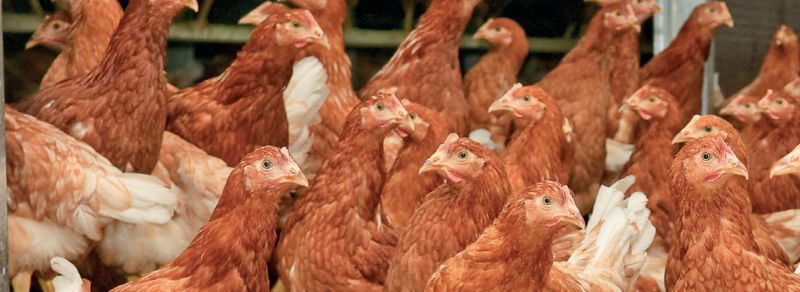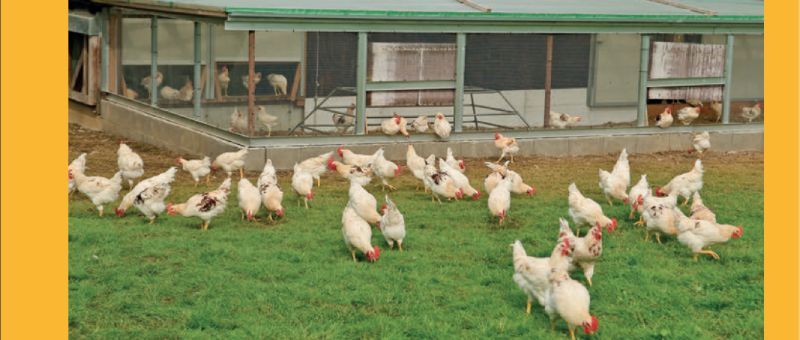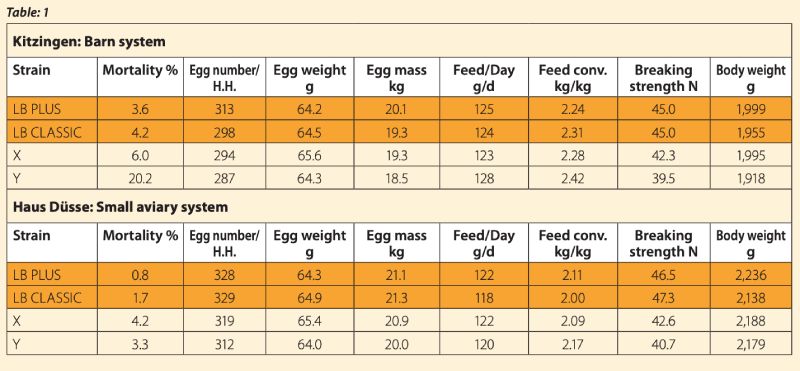A special layer for organic egg production
Since 2009, LOHMANN TIERZUCHT offers a special layer for the organic market.
This laying hen is characterized by a higher body weight and a higher feed intake compared to the regular brown layers. The hen is referred to with the suffix “PLUS” indicating its higher body weight. Parent stock of this genotype is housed in the organic farm of Mr. Schubert in Unterrüsselbach, east of Erlangen in Germany, since the end of 2009. Besides in Switzerland, this flock of LOHMANN parent stock is the only one of which already the parent stock is housed under ecological conditions.
Franchise hatchery with parent stocks in bio husbandry for organic producers
For years, the share of organically produced and marketed eggs in Germany is slightly but steadily increasing and, according to the MEG market balance, was more than 7 % in 2011. This continuing trend cannot be ignored by a breeding company and thus, it has to think about if there are layers which better meet the requirements of organic egg production. For sure, layers of all LOHMANN TIERZUCHT strains available in Germany are also suitable for organic egg production and they have proven that by numerous good performance results. But it is well known, that “better is the enemy of good” and for this reason, in the year 2009 it has been considered how it would be possible to achieve a targeted improvement for the exacting demands of organic egg production.
Higher body weight and higher feed intake required
First talks in the years 2008 and 2009 made it clear that the DEMETER association in Germany aims at offering its members (and members of other organic farming associations) chicks and pullets for egg production of which the parent stock is already housed according to the requirements of the association. As for this purpose a new parent stock husbandry should be built up, it was possible to additionally think about a genetic adaptation. The requirements of organic egg production placed upon the layers mainly concern limitations of the raw components: no soy meal, no synthetic amino acids. This often leads to a critical feed structure and a lower nutrient density than with conventional feeding. For ensuring that the laying hens take in sufficient nutrients in order to produce the desired performance, layers with higher feed intake have a clear advantage.
Lines with higher body weight existed
Due to other former considerations, at that time already lines existed in the gene pool of LOHMANN TIERZUCHT, which had a higher body weight and, always correlated to that, also showed a higher feed intake. These lines are, however, no exotics, but as so-called subpopulations come from the original breeding lines of LOHMANN BROWN. Thus, over several generations particularly those families were chosen, which fulfilled the requirements of a high body weight best. The new lines were then built up from these families. The first internal comparisons (field tests for offspring tests in practical farms) of LOHMANN BROWN PLUS layers and layers of the common breeding line LOHMANN BROWN Classic showed that the laying performance is at a similar level and that also the egg quality, especially the shell colour and breaking strength, can definitely keep up with the outstanding performance of the LOHMANN BROWN CLASSIC layers. Therefore, the selection on a higher body weight has not influenced the quality characteristics

Free range and winter garden for LOHMANN BROWN PLUS parent stock

LOHMANN BROWN PLUS pullets
Results of LOHMANN BROWN PLUS in Random Sample Tests
As in 2010 the strains for the 9th Bavarian Random Sample Test of laying hybrids had to be registered, it was decided that layers of the new line should participate in the laying performance test. The very good results of LOHMANN BROWN PLUS in this comparison are shown in table 1. The table also contains the results of the 1st North Rhine-Westphalian Random Sample Test. Here, layers from the same rearing as for Kitzingen were housed in small aviary systems in order to test the same strains under different environmental conditions. Both comparisons prove that the LOHMANN BROWN PLUS layers absolutely keep up with the performances of the LOHMANN BROWN CLASSIC and especially in the results of the Haus Düsse show a considerably higher body weight.
Use of male chicks
A secondary aspect of the higher body weight is the fact that at the same age the male chicks of LOHMANN BROWN PLUS are slightly heavier than those of LOHMANN BROWN CLASSIC. This characteristic supports, however only to a minor extent, the fattening respectively the rearing of the male chicks as small broilers or as cocks. Unfortunately, the effect of the higher body weight occurs not before the sixth to eighth week of life and even then, is not that big.
Name of the strain might lead to misunderstandings
From the vantage point of the present, the designation of the new layer may not have been that favourable, because it could easily be confused with the layer „LOHMANN BROWN EXTRA“ having a higher egg weight (at the same body weight) as the common LOHMANN BROWN CLASSIC, but having only a slightly and nearly not measurable higher body weight. The suffix “PLUS”, however, indicates a plus with regard to the body weight and not the egg weight, which is even not desired for organic egg production and marketing. Retrospectively, a naming with a clear reference to the increased body weight would have been preferable.
Dr. Matthias Schmutz, Genetics
Photos with kind permission
of Mr. Marcel Berendsen



Rearing of LB PLUS males










